External links
| Originators | ||
|---|---|---|
| Patrons | ||
| Dealers | ||
| Exhibitions | ||
| American artists | ||
| Canadian artists | ||
| Other artists |
| |
| Other media | ||
| See also | ||
| Related | ||
| Paintings |
|
|---|---|
| Portrayals |
|
| The Impressionists | |
|---|---|
| Genre | Docudrama |
| Written by | Sarah Woods Colin Swash |
| Directed by | Tim Dunn |
| Starring | Richard Armitage Charlie Condou Aidan Gillett Julian Glover Andrew Havill Will Keen Michael Muller |
| No. of episodes | 3 |
| Production | |
| Producer | Mary Downes |
| Editor | Andrea Carnevali |
| Original release | |
| Network | BBC |
| Release | 30 April – 14 May 2006 |
The Impressionists is a 2006 three-part factual docudrama from the BBC, which reconstructs the origins of the Impressionist art movement. Based on archive letters, records and interviews from the time, the series records the lives of the artists who were to transform the art world.
The Impressionists is a tale of motivation, creation, poverty, hope, and of the struggle for recognition, set against a backdrop of war, revolution and Parisian artistic movements.
At the heart of the story is the brotherhood of artists, bonded by enduring friendships and their commitment to a new type of art. The story is led by the paintings. Some of the world's most memorable art works are recreated, following the same techniques that the artists used at the time.
The series reveals how Claude Monet, in a race against time to capture the light, took just 40 minutes to paint his seminal work Impression, Sunrise ; why Édouard Manet's depiction of Olympia, in which his model brazenly gazes out of the canvas, so outraged Parisian society; and how Paul Cézanne's 60 paintings of one mountain, Montagne Saint-Victoire, helped to lay the foundations for Cubism and modern art.
Julian Glover plays 80-year-old Monet, the "Father of Impressionism" and narrator of the series. He undertakes a nostalgic but sometimes painful journey as he looks back on his past life in an interview with a journalist conducted at his garden, pond and home in Giverny.
Monet remembers arriving as a young man in Paris in 1862, full of dreams about a new kind of art. Young Monet, played by Richard Armitage, leads the group of friends with his vision for paintings that capture the images, energy and light of the modern world.
In the drama, Monet describes his fellow artists, friends and supporters with whom he painted, struggled from poverty with and shared experiences, thoughts and art: Frédéric Bazille, played by James Lance, the little-known genius who died too soon to enjoy the movement's success but who inspired its first exhibition; Pierre-Auguste Renoir, played by Charlie Condou, an irrepressible lover and painter of women; Édouard Manet, played by Andrew Havill, whose work was Monet's first inspiration but was censored by society; Edgar Degas, played by Aden Gillett, who captured the back stage reality of the ballet world; and Paul Cézanne, played by Will Keen, whose innovative work determined the path of modern art. Amanda Root plays Alice Hoschedé, Monet's great love.
Using quotes from the primary sources, the series depicts the characters' idiosyncrasies—Cézanne's hatred of barking dogs, his mistress Hortense's love of lemonade, Monet's flamboyant dress sense, and Degas' irritability.
It was shot on location in Provence and Normandy, at Claude Monet's home and garden at Giverny and at locations in the UK.
The series was filmed with the Panasonic SDX 900 DVCPRO 50 professional camcorder in widescreen 25fps progressive mode.
The drama does not include several main impressionist artists such as Gustave Caillebotte, Mary Cassatt, Armand Guillaumin, Berthe Morisot, Alfred Sisley, and Camille Pissarro (Pissarro is the only artist to have shown his work at all eight Paris Impressionist exhibitions).

Oscar-Claude Monet was a French painter and founder of impressionist painting who is seen as a key precursor to modernism, especially in his attempts to paint nature as he perceived it. During his long career, he was the most consistent and prolific practitioner of impressionism's philosophy of expressing one's perceptions of nature, especially as applied to plein air (outdoor) landscape painting. The term "Impressionism" is derived from the title of his painting Impression, soleil levant, exhibited in 1874 initiated by Monet and his associates as an alternative to the Salon.
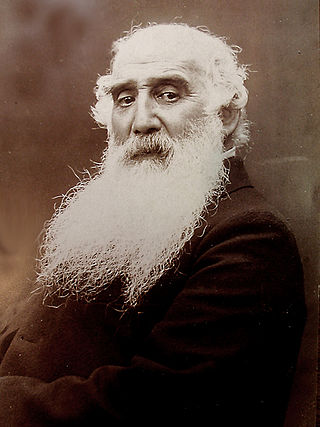
Jacob Abraham Camille Pissarro was a Danish-French Impressionist and Neo-Impressionist painter born on the island of St Thomas. His importance resides in his contributions to both Impressionism and Post-Impressionism. Pissarro studied from great forerunners, including Gustave Courbet and Jean-Baptiste-Camille Corot. He later studied and worked alongside Georges Seurat and Paul Signac when he took on the Neo-Impressionist style at the age of 54.

Édouard Manet was a French modernist painter. He was one of the first 19th-century artists to paint modern life, as well as a pivotal figure in the transition from Realism to Impressionism.

Impressionism was a 19th-century art movement characterized by relatively small, thin, yet visible brush strokes, open composition, emphasis on accurate depiction of light in its changing qualities, ordinary subject matter, unusual visual angles, and inclusion of movement as a crucial element of human perception and experience. Impressionism originated with a group of Paris-based artists whose independent exhibitions brought them to prominence during the 1870s and 1880s.

Paul Cézanne was a French Post-Impressionist painter whose work introduced new modes of representation and influenced avant-garde artistic movements of the early 20th century. Cézanne is said to have formed the bridge between late 19th-century Impressionism and early 20th century Cubism.

Pierre-Auguste Renoir was a French artist who was a leading painter in the development of the Impressionist style. As a celebrator of beauty and especially feminine sensuality, it has been said that "Renoir is the final representative of a tradition which runs directly from Rubens to Watteau."

Edgar Degas was a French Impressionist artist famous for his pastel drawings and oil paintings.
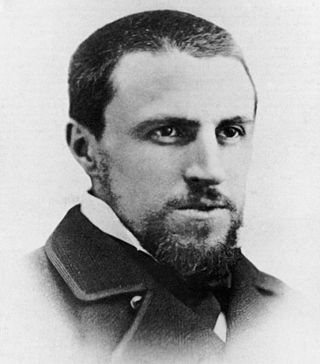
Gustave Caillebotte was a French painter who was a member and patron of the Impressionists, although he painted in a more realistic manner than many others in the group. Caillebotte was known for his early interest in photography as an art form.
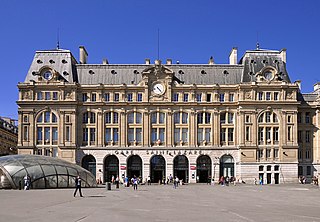
The Gare Saint-Lazare, officially Paris Saint Lazare, is one of the seven large mainline railway station terminals in Paris, France. It was the first train station built in Paris, opening in 1837. It mostly serves train services to western suburbs, as well as intercity services toward Normandy using the Paris–Le Havre railway. Saint-Lazare is the third busiest station in France, after the Gare du Nord and Gare de Lyon. It handles 290,000 passengers each day. The current station building opened in 1889 and was designed by architect Juste Lisch; the maître d'œuvre was Eugène Flachat.

The Courtauld Gallery is an art museum in Somerset House, on the Strand in central London. It houses the collection of the Samuel Courtauld Trust and operates as an integral part of the Courtauld Institute of Art.
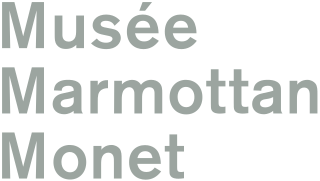
Musée Marmottan Monet is an art museum in Paris, France, dedicated to artist Claude Monet. The collection features over three hundred Impressionist and Post-Impressionist paintings by Claude Monet, including his 1872 Impression, Sunrise. The museum's fame is the result of a donation in 1966 by Michel Monet, Claude's second son and only heir.
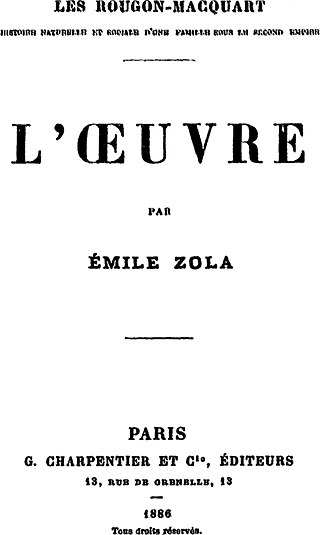
L'Œuvre is the fourteenth novel in the Rougon-Macquart series by Émile Zola. It was first serialized in the periodical Gil Blas beginning in December 1885 before being published in novel form by Charpentier in 1886.

Saint-Georges majeur au crépuscule refers to an Impressionist painting by Claude Monet, which exists in more than one version. It forms part of a series of views of the monastery-island of San Giorgio Maggiore. This series is in turn part of a larger series of views of Venice which Monet began in 1908 during his only visit there.

The Foundation E. G. Bührle Collection is an art museum in Zürich, Switzerland. It was established by the Bührle family to make Emil Georg Bührle's collection of European sculptures and paintings available to the public. The museum is in a villa adjoining Bührle's former home. In 2021 many works were exhibited on 20-year loan in almost a whole floor of the new extension of the Kunsthaus Zürich museum. There was controversy due to suspicions that many works were looted from Jews by Nazi Germany. The foundation was managed for decades by Bührle's son Dieter, who was sentenced to a conditional prison term of 8 months in 1970 for supplying weapons to the racist apartheid regime in South Africa.
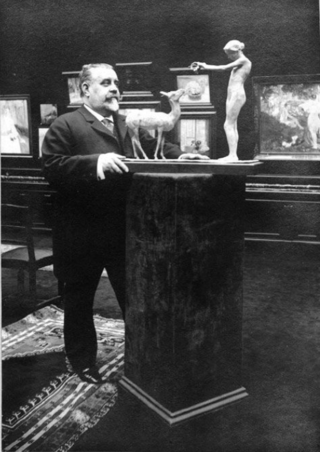
Georges Petit was a French art dealer, a key figure in the Paris art world and an important promoter and cultivator of Impressionist artists.

Blanche Hoschedé Monet was a French painter who was both the stepdaughter and the daughter-in-law of Claude Monet.
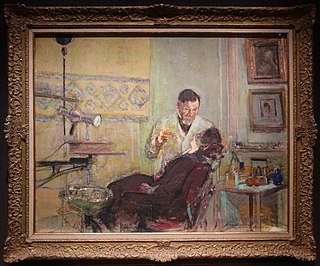
George Viau was a French dentist and art collector. His collection, which was built up and sold off more than once, included work by many impressionist painters and the artists who influenced them. Viau's dental practice was at number 47 Boulevard Haussmann, where one of his patients was Claude Monet.
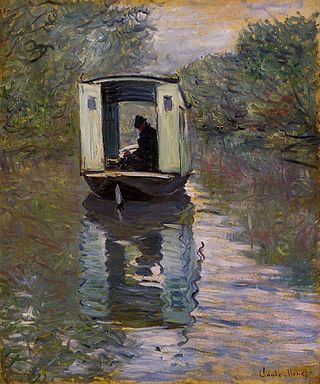
The Studio Boat is a painting from 1876 by the French Impressionist Claude Monet. The work depicts Monet at work in his studio boat on the Seine in Argentueil. It was executed en plein air in oil on canvas. It currently is in the collection of the Barnes Foundation of Philadelphia.

The Batignolles group was a group of young avant-garde painters from the end of the 19th century who gathered around Édouard Manet. The group bears its name in reference to the Batignolles district, where the artists used to meet between 1869 and 1875. Many of the artists in the group later became known for the Impressionism movement.

The First Impressionist Exhibition was an art exhibition held by the Société anonyme des artistes peintres, sculpteurs, graveurs, etc., a group of nineteenth-century artists who had been rejected by the official Paris Salon and pursued their own venue to exhibit their artworks. The exhibition was held in April 1874 at 35 Boulevard des Capucines, the studio of the famous photographer Nadar. The exhibition became known as the "Impressionist Exhibition" following a satirical review by the art critic Louis Leroy in the 25 April 1874 edition of Le Charivari entitled "The Exhibition of the Impressionists". Leroy's article was the origin of the term Impressionism.